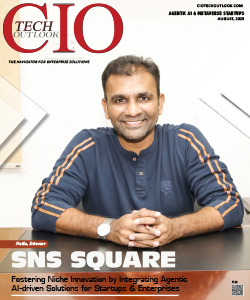Data-rich Premium Advertising for Outstanding Results
Will Cohen, VP of Mobile , Triad Retail Media
 Personalized Ads to Target Mobile Users:
Personalized Ads to Target Mobile Users:
Data and attribution are two of the most sought-after and desired aspects to facilitate a successful mobile advertising campaign. Big data allows advertisers, especially in mobile, to better target users with more personalized ads that they likely will actually want to see. This allows advertisers to launch hyper-localized campaigns, which targets a shopper or user at the right place at the right time. The ability to then track, analyze, and provide actionable insights to clients provides an advertiser with evidence of whether a campaign is performed according to desired KPIs and if it’s worth continuing the ad spend, or even increasing the budget.
Stay Connected with Internet of Things:
The average persons with mobile are always connected. The Internet of Things is creating an ecosystem where it is necessary to own wearable or mobile technology to participate in the vast array of communication and digital connections that we now have. For instance, Apple sold twice as many Apple Watches as iPhones in each device’s debut year. Analysts estimate that about 12 million watches were sold in year one. It proves that people are interested in being “more connected,” which brings additional avenues and platforms for advertisers to focus and target their shoppers.
"‹As security infrastructure is paramount, so there must be a secure setting for content and data to be browsed, shared, and collected.
Fostering Innovation in Mobile Advertising:
I think that innovation and growth will come organically as more people continue to use mobile for the lion’s share of their daily activities. However, we have learned that with mobile advertising, real estate and data are key, and may be more than any other medium when it comes to marketing. That’s why marketers and industry experts should continue to push for more unique ways to integrate advertising that is not intrusive or takes up too much space. Native advertising is a by-product of the natural progression of using mobile to shop and browse content. As users not only ask, but demand more relevant and interactive content, advertisers and publishers should continue to foster an environment that facilitates these wishes without sacrificing the user experience. Emerging technologies such as virtual stores via VR and location-relevant messaging that utilizes beacons and geo-proximity are important to consider.
Rethink of Consumer Reach with Viewer Data:
Data accumulation is such a huge topic of discussion in digital, but in mobile specifically, it is the key. The first thing to do when identifying options to collect viewer data and what to do with it is to identity KPIs and what the overall goal is. Compared to web, in-app advertising can provide a better solution to capture higher amounts of viewer data. This is because apps are typically where more engagement and interaction occurs in mobile. In-app ads are enhanced by location data, which is really one of the first steps in understanding the engagement of users. Location can unlock many additional forms of viewer data such as demographics and content, which helps to get a broader depiction of your audience. Next, it is crucial that when collecting data you have a secure platform to store and parse it out. There are many data management platforms (DMPs) that specialize in mobile data, especially with location viewer data as previously mentioned. Mobile DMPs can collect data from multiple sources, including where the person is, what they are doing on their device and from which location they are using their device. Mobile DMPs also help in measuring pre and post-exposure to an ad and see if there was indeed an impact on the user.
Secure Infrastructure for Digital Content:
Since digital is now where the majority of ad dollars are heading, advertisers and publishers must adapt and prepare to facilitate an environment that is conducive to this monumental shift. First, security infrastructure is paramount, so there must be a secure setting for content and data to be browsed, shared, and collected. Have a checklist, security measurement, and auditing process in place. Next, since there is a strong shift to native advertising in mobile, it is important to have an ad server that can facilitate this. Many native ads are still hardcoded or “site or app-served”; however, it’s crucial that these advertisements are still served to ensure scaling, as well as for real-time reporting, targeting, and optimizing. While native advertising in mobile is still nascent, it’s geared to take off, so it’s best to have the infrastructure in place now, rather than waiting until its more prevalent. Whether it’s specific to mobile or broad-ranging and able to still ingest mobile data, it is important to have a secure and robust platform that helps marketers and publishers identify, segment and use collected data.
Never Stop Innovating:
Innovation does not happen overnight — it also never stops. Just when you think you may have something that really taps into recent technology and innovation, something newer or better is out there. With mobile, you are essentially dealing with a person’s shadow, as their phone is always by their side. The average person using mobile also typically has a shorter attention span than when they browse other mediums. Their phone is their sidekick, their best friend, and is always with them. So whatever it is that you’re creating, it must be engaging and interesting to them. You want to make it the best experience to really impress your customers and clients. The key is to not get frustrated by the constant change and keep your head down, and foot on the pedal. The key with innovation is that it’s really something that has to be well thought out and relevant to your audience. Be methodical and pragmatic because you want to keep an open mind with blue oceans, and finally ‘Never Stop Innovating’.
Ad Blocking and Fragmentation is yet to Resolve:
A continuous challenge facing mobile advertisers in the next year is still the fact that ad spending is not in parity with time spent on mobile. Although it’s grown greatly, spending on mobile is still a fraction when compared to how much people are using their devices. So there is still much more needs that have to be done with mobile advertising formats. Ad blocking is also something to be considered. It was a big buzz word, especially last year, because of Apple’s decision to allow developers to create ad-blocking apps. This makes creating more relevant and engaging ads and sponsored content even more important, as users are less inclined to block ads that are helpful and useful to their experience. Finally, fragmentation is still an area that many marketers have yet to resolve. There are millions upon millions of devices out there, so following a user from device to device is a tedious task. New technologies have evolved and allowed for better cross-screen measurement, but it is important to identify a way to accurately track a user’s journey from device to device and make a unified experience for them.



.jpg)
